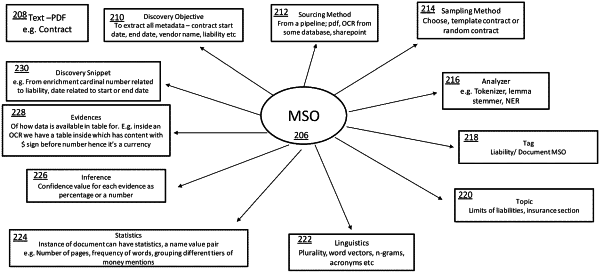| CPC G06N 5/022 (2013.01) [G06F 3/04842 (2013.01); G06F 40/169 (2020.01); G06F 40/237 (2020.01); G06F 40/30 (2020.01); G06N 5/04 (2013.01)] | 21 Claims |

|
1. A method comprising:
acquiring knowledge from one or more knowledge sources;
storing the acquired knowledge in a memory;
parsing a natural language query; and
in response to parsing the natural language query, accessing one or more electronic documents, the one or more electronic documents expressing a knowledge graph including a plurality of nodes expressed in the electronic document;
traversing the knowledge graph to detect an absence of detail sufficient to completely answer the parsed natural language query;
invoking an application program interface (API) to extract at least a portion of the stored acquired knowledge and create a managed semantic object to be included as a node in a modified knowledge graph in the one or more electronic documents, wherein:
the modified knowledge graph is capable of answering the natural language query based, at least in part, on the created managed semantic object, semantic labels generated with the created managed semantic object and an edge connecting the created managed semantic object to the modified knowledge graph;
the managed semantic object comprising:
a container, the container comprising:
one or more attributes relating the managed semantic object to a real-world object, the one or more attributes of the container to be determined based, at least in part, on the extracted at least a portion of the stored acquired knowledge, the one or more attributes of the container modelling behavior of the real-world object based, at least in part, on a statistical analysis of observations obtained from the extracted at least a portion of the stored acquired knowledge and enabling the managed semantic object to dynamically change relative to other elements in the modified knowledge graph based, at least in part, on the one or more attributes of the real-world object;
an indication of at least one of the one or more knowledge sources;
one or more linguistic rules associated with the real-world object;
at least one discovery objective to at least in part determine the acquired knowledge;
an indication of one or more sourcing methods associated with at least one of the one or more knowledge sources; and
evidence of an availability of content in the one or more knowledge sources according to a particular format.
|